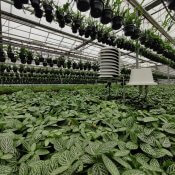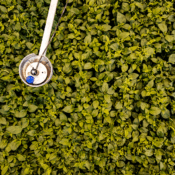Combining green thumbs and digital technology
What’s printed in today’s newspaper was already available online yesterday. We make our phone calls more frequently through an app, and can buy just about anything online. The world has undergone a significant digital transformation in the past decade. No branch of industry has been excluded from this development, including horticulture. Nevertheless, we have not reached the end of this transformation yet. As a matter of fact, we have only just begun. There are still many opportunities in the field of horticulture to combine green thumbs and digital technology.
‘In the horticulture industry, most growers rely on their gut feeling and their intuition to grow their crops. This is something that we are completely used to. However, as tools and sensor technologies continue to improve, we can start to rely more on data and take a data-driven approach. I think that the combination of a growers’ intuition with the right tools, such as wireless sensors and software, will become increasingly important.’ says a West Frisian grower of young plants.
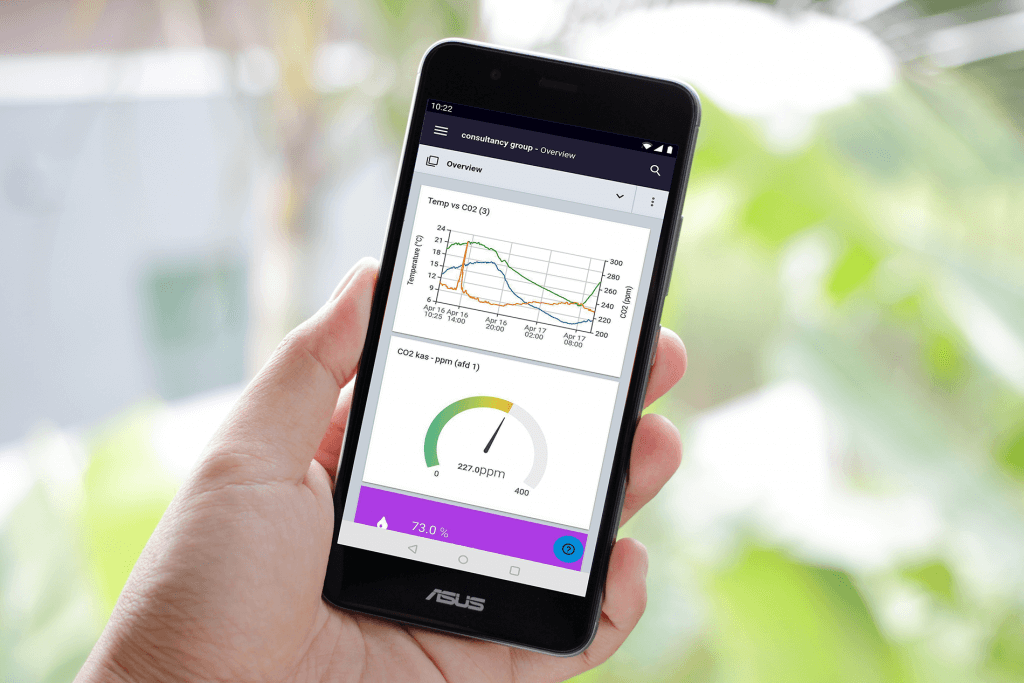
Continuous optimisation of cultivation strategy
Digitalisation allows growers to build a database full of useful and adequate data describing the climate and crop. It facilitates the management and optimisation of cultivation strategies and production processes in a single digital platform. Growers closely monitor the crops in their greenhouse or polytunnel and compile an interactive record of their cultivation methods.
These records make data such as climate, soil moisture, energy consumption, CO2 and crop health available to growers on a 24/7 basis, no matter where they are. The decisions that are subsequently taken concern aspects such as their strategies for climate, irrigation and pest control. This ultimately leads to higher productivity, a more efficient use of raw materials and higher-quality crops.
Ebook: 5 opportunities to benefit from digital horticulture
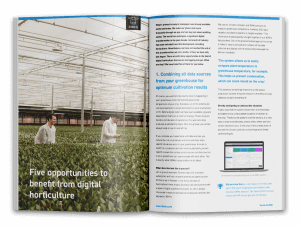
The digitization of horticulture offers great opportunities for energy-efficient cultivation. The use of sensor and climate data provides new insights to optimize cultivation.
Preventing downy mildew
‘We decided that we wanted to take the next step in digitising our production processes with 30MHz. In addition to the platform, we started using microclimate sensors to compare the data with our existing climate computer data. All this data is fed into the 30MHz data platform so that we can analyse and use these insights every moment of the day.’ according to the West Frisian grower.
We now have a drier climate in the greenhouse, which allows us to prevent downy mildew. Our ability to measure oxygen levels and plant temperature has made it much easier to create an optimum climate for our plants. Plants thrive and are more resistant to disease when they are grown in an optimum climate. The 30MHz platform offers the advantage that all data is collected in one place, but can be accessed on multiple devices – including my phone.’
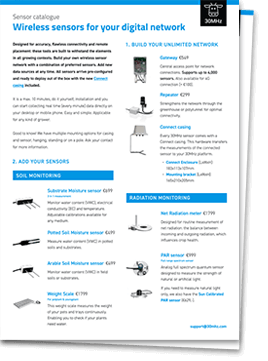 30MHz Sensor Catalogue
30MHz Sensor Catalogue
Designed for accuracy, flawless connectivity and remote placement, these tools are built to withstand the elements in all growing contexts. Build your digital infrastructure with a combination of sensors that suit your needs, and add new data sources at any time.


30MHz is typing… Our extended support team is ready to chat!
At 30MHz we think it’s important that our users can use our platform in an optimal way. At times you may have questions and you would like some help from our support team. Email and our support page filled with helpful articles were your go to’s. But we thought it was time for something extra… ...Read more
New 30MHz connect casing: How we protect your tech
To make sure your dataflow is fully protected, 30MHz introduces a new connect casing: waterproof, dust proof and even resistant to hits. This special shield will last longer and ensure a reliable dataflow from the connected sensor. What does that full protection mean? That’s what we will explain in this article. Watertight: resistant to wetness ...Read more
Most popular sensors for your greenhouse
As a grower, you know that optimal crop development starts with precise monitoring of your cultivation environment. But how do you transform raw data into actionable insights for your crops? This is where our wireless sensors and the 30MHz platform come together. Our sensors measure essential variables such as VPD, dew point, moisture deficit, EC, ...Read more

